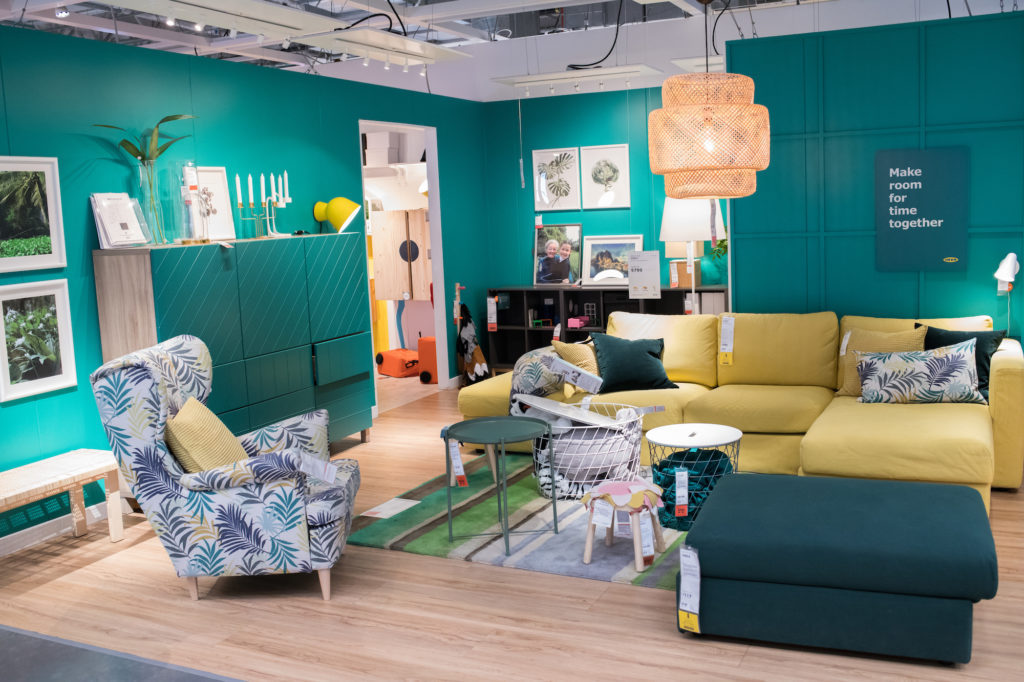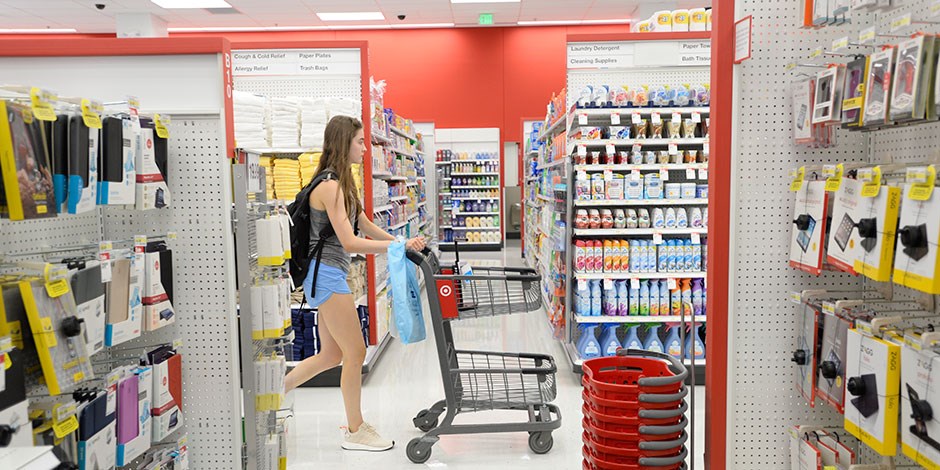Indicators and influences from the retail sector on branch formats
It’s no secret that the branch banking experience is due for an overhaul. While COVID impacted branch accessibility for consumers and drove transactions digitally, many banks and credit unions paused institutional decision-making around the branch network during the pandemic. But as Adrenaline spotlighted in Investing in Branch Transformation, proactively addressing the branch channel during COVID paid off for banks with “bold transformation of the branch network deliver[ing] four times higher productivity gains than incremental adjustments and produced a 23% leaner network,” according to a McKinsey study.
Style + Substance
While most financial institutions are aware of the pressing need for upgrades to their branch network, they’re less sure about the branch format style (and substance) that will ensure they’re responsive to today’s demands and ready for the future, especially as transactions steadily migrate to digital channels. Although the purpose of the branch is evolving, one thing remains constant: it’s that consumers still want a branch nearby, 15-minutes to be exact. Further, influenced by major advances in other sectors like retail and online, consumers also expect better experiences and more on-demand convenience from their financial institutions.
Financial institutions are responding to the call for better branches and better experiences by instituting plans for their branch networks over the next two years. But what formats will they implement? “In an industry built on human connection at branches, banks and credit unions are now faced with the challenge of keeping consumers engaged in an age of digital banking and social distancing,” according to Forbes’ exploration about expectations for banks in 2021. “Part of retaining consumers in this changed environment is providing excellent tools, resources and services as part of the customer experience.”
Retail Influences
Demand for change in banking comes from a myriad of outside forces, but none it seems is more impactful than retail. Recent research from Accenture notes that consumers demand “differentiated, curated experiences,” and continue to be highly influenced by brick-and-mortar with 78% of customers reporting in-store interaction as critical to purchase. Accenture says, “The implications for bank branches are profound. Customers love digital for routine transactions, but want human contact when they need it – and the fact it’s available in physical branches gives them reassurance about the bank’s brand. So branches still have a vital role as visible, tangible locations that provide a positive and personali[z]ed experience.”
Since it’s clear that much of what the consumer demands of banking come from outside the financial services sector, it’s our recommendation as a best practice to assess how these external forces, especially retail, inform and influence banking’s approach to branch format. In fact, many of the most successful retail brands have already implemented a laddered and layered retail format strategy, serving differentiated consumer demographics, life stages and needs-states of their customers. IKEA, for example, has six different formats reaching new audiences by translating the brand experience to use-specific smaller stores. With accessibility at their core, smaller urban-centered formats bring new retail concepts to the home goods market.

Home Goods Giant Goes Small
Anyone who has ever been to IKEA understands the kind of commitment it takes shop there because of the sprawling warehouse-style experience. Responding to consumer demands, especially heightened during COVID shutdowns, the Swedish retailer has been eyeing more modern formats to implement and has chosen 40 major cities for its new urban stores, including New York, Los Angeles, and Chicago. Of its new concepts, Jon Abrahamsson Ring, IKEA’s chief executive of brand, told the Financial Times: “It’s never going to be that we go back to only opening big stores. It will be a mix of formats, including smaller stores closer to where people live or work or move.”
Through its new formats, IKEA reaches new audiences by translating the brand experience to the specific needs of its consumers at every stage of their shopping journey, and include:
- Recycling Center: The company’s first second-hand store where furniture and goods are donated and repaired or repurposed, helping them deliver on their environmental brand values.
- Pick-up Point: A convenient and affordable alternative to home delivery, especially suitable for customers living in urban walk-up apartments that make deliveries more difficult.
- Pop-Up: Limited time shops spotlight themes or products in a novel way. These no-pressure formats can deliver surprising results. One of the brands’ kitchen pop-ups was so successful it has been open since 2017.
- Smaller Format: The small footprint store lets customers experience a comparable IKEA offering. Without self-serve furniture or owned parking, it’s shop-and-go or home delivery.
- Planning Studio: Centrally located and staffed with specialists, these formats help consumers design personalized spaces, like kitchens, and are supported through home delivery.
- IKEA Shop: These smaller category-focused offerings allow customers to explore a specific segment of the entire product range, supporting existing IKEA stores and e-commerce trends in the market.
This laddered approach helps the brand meet consumers at the point-of-need, whether they’re just beginning their IKEA journey starting in a new home or they’re ready for an upgrade. With convenience and customization as driving principles, this customer-centric and purpose-driven approach demonstrates why this Swedish brand has become a household name across the globe.
On Target
Another big-box retail brand going small(er) is Target. With a connected shopping experience linking between online and in-store, Target’s smaller formats are focused on serving different consumer segments – like college students and urban professionals – with a more tailored shopping experience, close-by. “Inventories can vary greatly from one of these stores to another perhaps just a few miles away,” according to Motley Fool. “Stores near colleges and busy business centers might offer more grab-and-go meal options as well as local college apparel, while less urban areas might feature more baby toys and children’s clothing.”
Banking on convenience and leveraging positive brand affiliations mean deeper connections with shoppers in ideal growth demographics and geographics, which is how Target it taking on the competition. “Having multiple types of locations means that Target has a huge advantage over [its chief rivals] both Amazon and Walmart, which leads to the second reason they’ve been such a success,” according to Inc. Magazine. “With more stores closer to its customers, one-hour in-store pickup, and same-day delivery… Target is making its stores the center of its delivery network, which is something neither of its main competitors can match in urban locations.”

Bringing It Home
What we’re learning from other successful retail formats is that omnichannel still exists – where consumers crave seamlessness between channels – but their demand for delivery is so much more mature than when the iPhone launched in 2008. The retail brand formats finding success are flexible and fast, but also intentional. Yes, retail is rolling out smaller, strategic formats, but those are matched with key flagships for larger market presence and ascendancy. Overall locations are decisively deployed – leveraging and leaning in on consumer needs-states and demographics – all married to strong brand affiliations and interactions. The result is a personalized experience for consumers that’s scalable for brands.
For more insights on branch formats, stay tuned to Believe in Banking as it tracks the big trends that are impacting financial services. To develop experience-based strategies in banking, like deploying tools that bridge the physical and digital divide, contact Adrenaline’s experts at info@adrenalinex.com or (678) 412-6903. For more information on bank branch operation in the post-COVID landscape, download the Roadmap to Reopening.